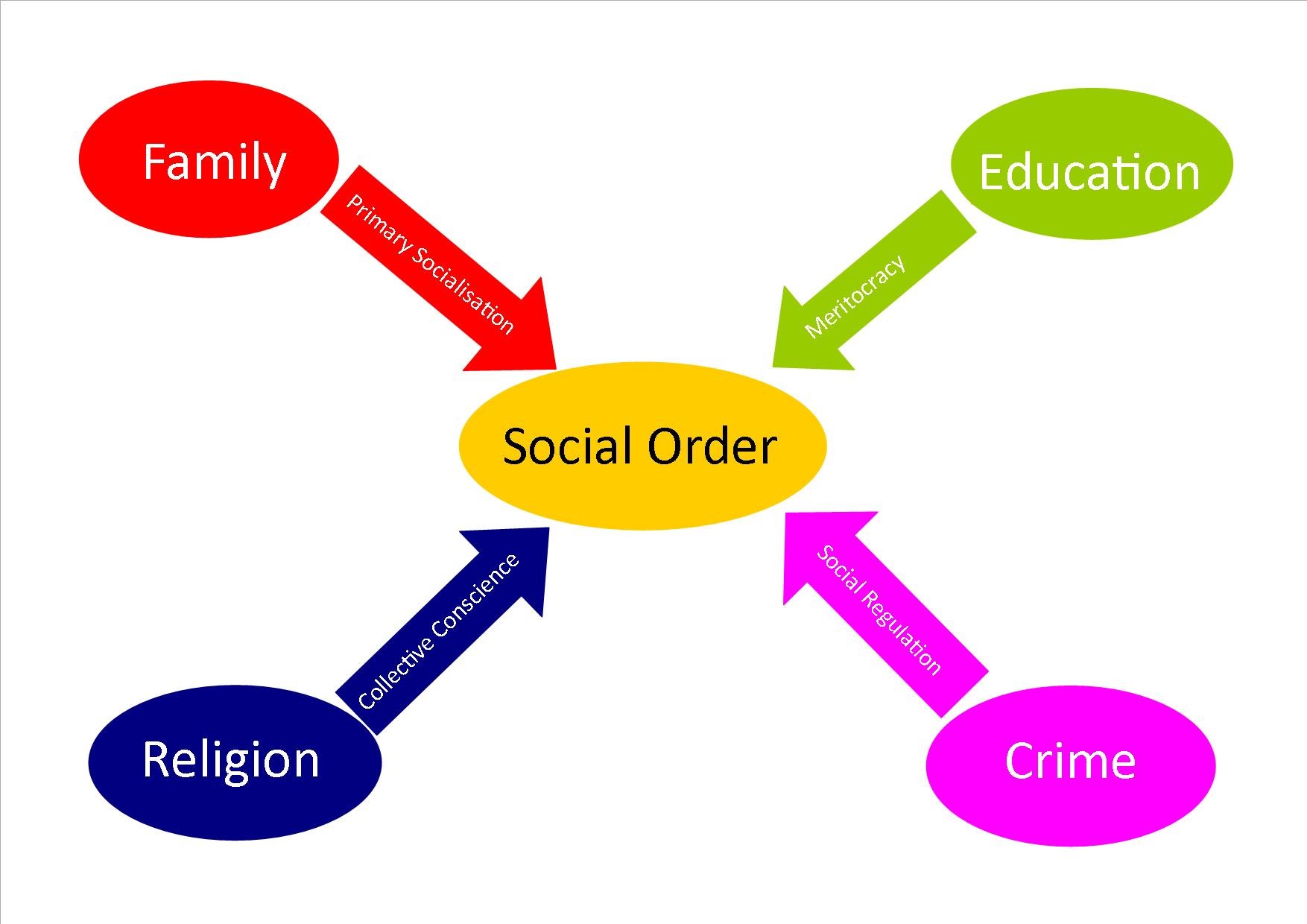Imagine a perfectly orchestrated symphony. Each instrument, from the soaring violins to the booming drums, plays its part, contributing to the overarching melody. This harmonious collaboration, this interconnectedness, is precisely the essence of functionalism, a powerful perspective in sociology.

Image: pediaa.com
Functionalism, often described as a “macro-level” framework, seeks to understand how different societal elements work together to create a cohesive and stable system. It’s like viewing society through a microscope, examining how families, education, religion, and even the economy contribute to the overall well-being and functioning of the social whole. But is this symphony always perfect? What happens when a crucial instrument goes out of tune? In this article, we delve deeper into functionalism, exploring its strengths and weaknesses, and unpacking its potential impact on our understanding of the world around us.
The Foundations of Functionalism: A Harmonious Orchestra or a Rigid System?
The roots of functionalism can be traced back to the 19th century, finding its fertile ground in the works of luminaries like Auguste Comte, Herbert Spencer, and Emile Durkheim. These pioneers asserted that society functions like a living organism, with each part contributing to the survival and equilibrium of the whole.
The cornerstone of functionalism rests on the idea of “social solidarity:” the interconnectedness between individuals and groups, allowing society to operate seamlessly. Emile Durkheim, who arguably solidified the functionalist approach, argued that social solidarity arises from shared values, beliefs, and traditions that bind people together. He even proposed the concept of “collective conscience” – a shared mindset that guides individual behavior and shapes societal norms.
Think of it as the conductor in our orchestral analogy. The conductor ensures that each instrument plays its part at the appropriate time, contributing to the grand symphony. In society, this shared understanding of norms and values acts as a conductor, orchestrating individual actions to maintain social order.
Key Concepts of Functionalism: Essential Components for a Thriving Society
To fully grasp functionalism, we need to understand its central concepts:
- Social Structures: These are the organized patterns of social relationships, institutions, and groups that make up a society. Imagine them as the individual instruments within our orchestra. Each structure, be it the family, the government, or the economy, plays a vital role in maintaining social stability and order.
- Social Functions: These refer to the positive contributions that each social structure makes to the overall well-being of society. Each instrument must play its part to create a pleasing melody, and similarly, each structure must fulfill its functions for a society to thrive.
- Social Equilibrium: This concept emphasizes stability and balance within society. Like the symphony that aims for a harmonious balance between all instruments, society strives for a state where all elements work in concert to achieve social order and continued operation.
Functionalism in Action: Everyday Examples
Functionalism is not just a theoretical construct; it weaves its way into our everyday lives. Look around, and you’ll find countless examples:
- Education: Education serves the critical function of transmitting knowledge and skills, equipping individuals to contribute to society. It prepares future generations for responsible citizenship and a productive workforce.
- Family: This basic unit provides emotional support, socialization, and the transmission of cultural values. It is the bedrock of society, playing a vital role in raising future generations and safeguarding social stability.
- Religion: Religion offers moral guidance, social cohesion, and a sense of belonging. It provides comfort and meaning, helping individuals navigate life’s challenges and promoting a shared moral compass.

Image: www.tutorsploit.com
Beyond the Harmony: Addressing the Critiques of Functionalism
While functionalism offers a compelling framework to understand social order, it hasn’t escaped criticism. Here are some of the key points raised by its detractors:
- Oversimplification: Critics argue that functionalism simplifies complex societal dynamics, overlooking the realities of power, inequality, and conflict. It’s like focusing on the beauty of the melody while ignoring the intricate, often difficult, dynamics between the musicians.
- Lack of Agency: Functionalism tends to downplay individual agency and choices, suggesting that individuals are merely pawns in a larger social system. It fails to account for how individuals can actively shape and change social structures.
- Conservative Bias: Some view functionalism as inherently conservative, emphasizing stability and order over social change. It might, for example, be less receptive to embracing radical reforms or challenging the status quo.
Navigating the Complexities: Moving Forward with Functionalism
Despite its limitations, functionalism holds immense value. It provides a valuable lens for understanding social order, highlighting the intricate interplay between social structures and their functions. It serves as a reminder that society, just like a symphony, is a complex system with many interdependent parts working in concert. However, it’s essential to acknowledge the limitations of this framework and appreciate the multifaceted and dynamic nature of human society.
Embracing Diversity and Dynamic Change
Recognizing the limitations of functionalism, we can move beyond its inherent conservatism by acknowledging the diversity of social experiences and the potential for dynamic change. We can incorporate critical analyses of power dynamics, social injustices, and individual agency to create a more nuanced understanding of our complex world.
Functionalism Perspective
The Future of Functionalism: Embracing a Broader Perspective
Functionalism continues to evolve. By incorporating critical perspectives and adopting a more nuanced understanding of social processes, we can harness its strengths while acknowledging its limitations.
As we strive to understand the complexities of our world, functionalism remains a valuable tool in our arsenal, prompting us to consider the interconnectedness and interdependency of social life. Remember: the symphony is at its best when all instruments work together, but it requires constant attention, refinement, and a willingness to evolve.






